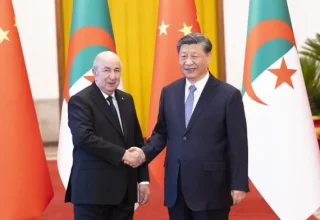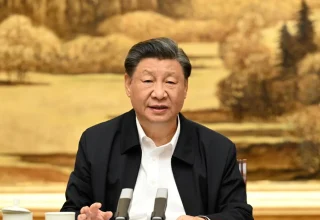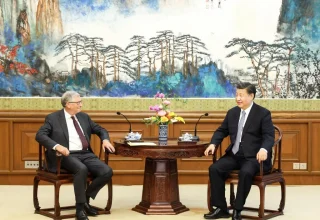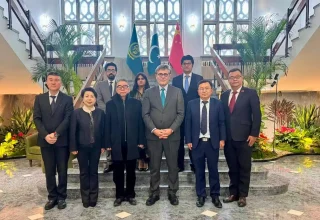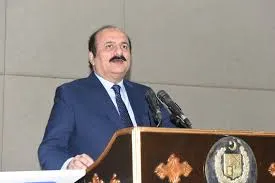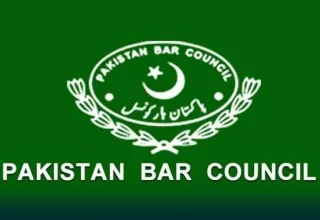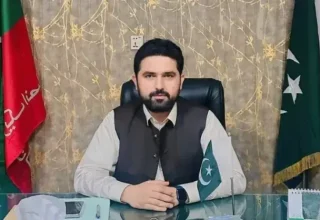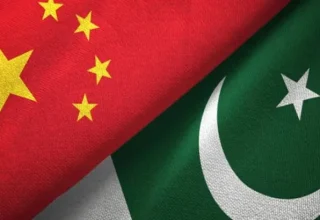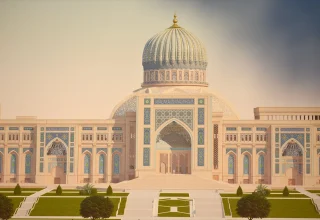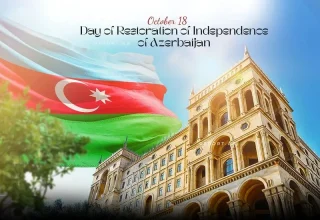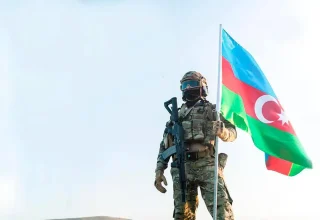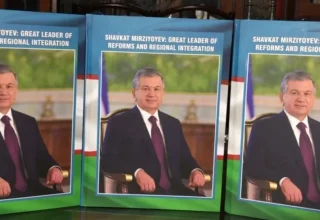
H.E. Ali Sher the ambassador of Uzbekistan this is your moment, it is my moment and this is a moment for the entire Central Asian Region. The completion of this book is all about discarding “I” and “Me” and discovering “We” in “Us”.
I am personally thankful to H.E. Ali Sher the Uzbekistan’s ambassador and the entire team who worked tirelessly to overcome all hurdles in the completion of this book. I really appreciate all the Prime Think Tanks of Uzbekistan, numerous PHD Uzbek Scholars and MOFA for their extended cooperation and coordination. Last but not least I personally acknowledge the valuable contributions of Major General Khalid Amir Jaffari, the president of our Think Tank for his unwavering support and faith in my capabilities.
It is a joint publication of “The Center for South Asia and International Studies” and “The Center for Knowledge and Public Policy”. It has total pages of 442, words, 150,234, characters 1,017,00, paragraphs 4541 and lines 16,602 vividly reflecting its momentous stature. It has nine chapters.
I would like to share that the idea of writing a comprehensive book was discussed one year ago. All the topics have been selected through “consultative mechanisms” with three primer think tanks of Uzbekistan along with valuable inputs of its various PHD Scholars of Universities and Foreign Ministry. It has been a “byproduct” of complete secrecy, constant close liaison and joint collaborative efforts of all of us.
Interestingly, annual GDP growth of Uzbekistan averaged between 5 and 6 percent since the “reform drive” began, and the national poverty rate has fallen to 8.9 percent which may be surpassed to 6 percent during 2025 upholding its immense stability, sustainability and diversity inching towards quality development, modernization and digitalization.
Uzbekistan is now in the final stages of its World Trade Organization (WTO) accession process, with a goal of joining by 2026, a move that could further open its economy and deepen global ties.
This book is the first of its “kind” in Pakistan’s academic history which covers more than 39 different subjects pertaining to the Republic of Uzbekistan’s macro-economy, community development, private enterprises, society, system and systematized good governance, financial reforms, poverty eradication, generation of new jobs, politicization, democratization, constitutional evolutionary journey, culture diplomacy and last but not least bilateral relations with Pakistan, visionary leadership, structural reforms, national development strategies and last but not least great regional connectivity.
It is indeed a complete book and of course a “Missing Link” to policy makers of both countries and a “Ready Reference” to potential businessmen and investors for the further strengthening of Pak-Uzbek bilateral relations in the right direction. It is a “giant” step towards formation of a “Corridor of Knowledge” consisting of genuine scholars, regional experts, strategists, applied economists, think tanks and diplomats.
It is not confined only to “Conventional Wisdom” highlighting only the one side but is also full of practical solutions, comprehensive suggestions and effective recommendations, gearing Uzbekistan’s economy, society and system towards greater stability, sustainability, progress, prosperity and peaceful resolutions.
Additionally, it is not all about “Appeasement Management Doctrine” because it always achieves short term gains and grains but for securing a long term sustainable growth voices of genuine scholars, experts and strategists must also be heard and respected for forming a progressive society, maintaining a liberal economy, securing a people’s centric governance, preserving financial decentralization, gearing qualitative industrialization, modernization and connectivity and because this book is based on a “Holistic and Comprehensive” scheme which has covered all aspects and secrets of human survival, societal strivings towards economic self-reliance, national resistance and above all strategic vision of leadership in shape of H.E. Shavkat Mirziyoyev the President of Uzbekistan. It diminished notions and concepts of “storytelling” and “stereotype presentation” and self-calming of “senior expert syndrome”.
Therefore, the author rightly submits that the policy makers of Uzbekistan must keep pushing on structural reforms: modernizing utilities, improving education, expanding broadband access, and ensuring transparent public investment. Hopefully these ongoing structural reforms would succeed to maintain a long-term, sustainable prosperity.
It is a codification of economic liberalization, institutionalization of Foreign Direct Investments, journey from centralization to decentralization, connectivity and immense people’s welfare. It has “transcended” journey of centuries into a book which provides suggestions to transform ancient civilization, traditions and culture into cashable commodities through a complete scheme of arrangement, brotherhood into a best practiced model of doing business and last but not least similarities into ships of socio-economic integration, industrial cooperation, joint ventures and development of productive channels.
Obviously, this miraculous socio-economic development did not happen by chance. Since President Shavkat Mirziyoyev came to power in 2016, Uzbekistan has pursued a series of market-oriented reforms to dismantle decades of economic isolation and stagnation. The government unified the exchange rate, lifted currency restrictions, and simplified customs and tax rules. It began privatizing state enterprises, liberalizing trade, and reducing barriers to foreign business.
It is not all about its folks and fairy tales, rather it is all about converting these treasures into the “Human Libraries Model” commonly used in most of the modern countries and communities around the globe to attract more and more regional as well as global tourists. Hence it is about “Figures” which speak by themselves, mitigating all false, fake and fabricated propaganda about Uzbekistan’s economy, society and system.
I also appreciate policy suggestions of Ansar Bhatti, Tazeen Akhtar, Riaz Ahmed, Shams Abbasi, Safeer Hussain Shah and last but not least Muhammad Ramzan for their unconditional support and commitment to jointly work for the further strengthening of bilateral relations. They are doing a great job in the sphere of “Public Diplomacy”. And Media Diplomacy in the country which should be highly appreciated.
To conclude, it is suggested that both countries should focus on the creation of joint ventures in sectors such as the textile industry, garments, fashion industry, agriculture, pharmaceuticals, and information technology. Interestingly, now there are 130 joint ventures operating in Uzbekistan with Pakistani capital participation.
It is submitted that policy makers of both countries should start thinking detouring Afghanistan for their ultimate connectivity, socio-economic integration, exports, e-commerce, human capital development, industrial cooperation and promote their trade through Gwadar-Kasghar-Khorgos axis guaranteeing a sustained, peaceful and easy trading system in the days to come.
Since Uzbekistan is a great “Sporting” nation having passions and expertise in boxing, judokas, taekwondo, long tennis, football and rugby, joint ventures of these sports’ equipment would be a win-win situation for both the countries.
Both countries enjoy strategic partnership status, which would be further strengthened through involvement of the private sector, building of reciprocal trade houses, building of model manufacturing, industrial, hybrid agriculture units on the “Model of Singapore or China” in their respective countries.
There is an urgent need to follow a “paradigm shift” from mere focusing on transit trade, cosmetic chambers of commerce meetings and photogenic economic interactive sessions. A new innovative, integrated and digitalized model of economic integration, industrial cooperation, investment and joint ventures are the need of the hour.
It is noted that weakening of the mutual banking & financial system is badly hurting sustainable economic, trade and investment cooperation between two countries which must be rectified as soon as possible. Cooperation in Islamic Banking, SMEs, startups and formation of joint regional supply chains would further strengthen bilateral relations.
The dreams of trans-regional connectivity are very much possible in which diversified means of connectivity consisting of rail, transport (NLC TIR services, cluster container facility), freight transportation, Gwadar seaport, and CPEC Phase 2.0 would play an important role in the days to come. Start of “commercial cargo” would be a value addition in further strengthening of volumes of imports & exports.
I just quote the latest published report of the world bank clearly indicating stability and sustainability of Uzbekistan’s macro-economy which has been rated as one of the five fastest-growing economies in the broader Europe and Central Asia region. The report projects Uzbekistan’s GDP will expand by about 6.2 percent in 2025 well above the regional average amid an overall slowdown across emerging European and Central Asian markets. Overall regional GDP growth is expected to ease to roughly 2.4percent in 2025, down from 3.7 percent in 2024.
Rising income from abroad and expanding investment at home due to an increasingly investor-friendly climate are the twin engines of Uzbekistan’s boom.
Government spending on infrastructure and industrial projects remains high, and foreign capital is flowing in at record levels. According to Uzbekistan’s Ministry of Investment, Industry and Trade, foreign direct investment reached about US$10 billion in 2024, the highest on record. Projects span energy, agriculture, and information technology, with investors from South Korea, China, the Gulf states, and Europe among the most active.
Uzbekistan’s growth carries weight beyond its borders. As the most populous nation in Central Asia, with approximately 37 million people, its success also supports regional stability and development. A dynamic Uzbek economy strengthens trade routes that link China, South Asia, and Europe through the Middle Corridor, an increasingly important strategic alternative to routes passing through Russia, where Uzbekistan is working to become a central hub connecting East and West.
Uzbekistan’s steady growth provides a measure of political and economic stability along the corridor stretching from the Caspian Sea to western China.
Washington’s C5+1 Platform links the five Central Asian states with the U.S. on trade and energy cooperation. The EU, meanwhile, launched its Global Gateway Initiative in the region to finance sustainable infrastructure, with Brussels and Tashkent signing an Enhanced Partnership and Cooperation Agreement in 2022 to strengthen trade and governance ties.
Uzbekistan is entering a new phase of development, with growth no longer driven solely by commodity exports but increasingly by manufacturing, services, and information technology.
The World Bank’s 2025 update notes that structural shifts “toward higher-value sectors” are already visible. Uzbekistan’s trajectory over the next few years will matter not only to its citizens but also to investors and policymakers beyond its borders. A stable, reform-minded, and growing Uzbekistan could help shape a more connected, diversified, and resilient Eurasian economy.


